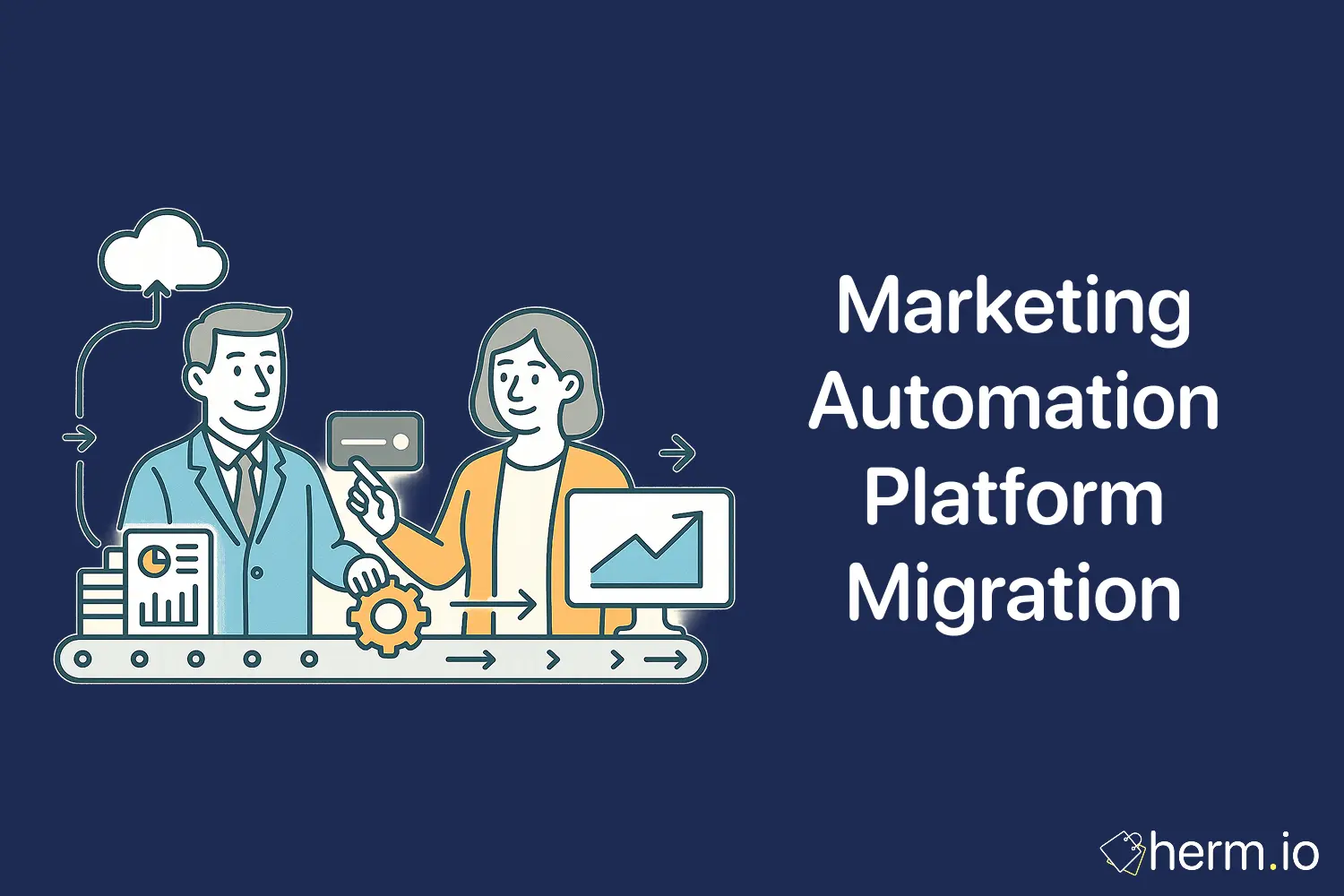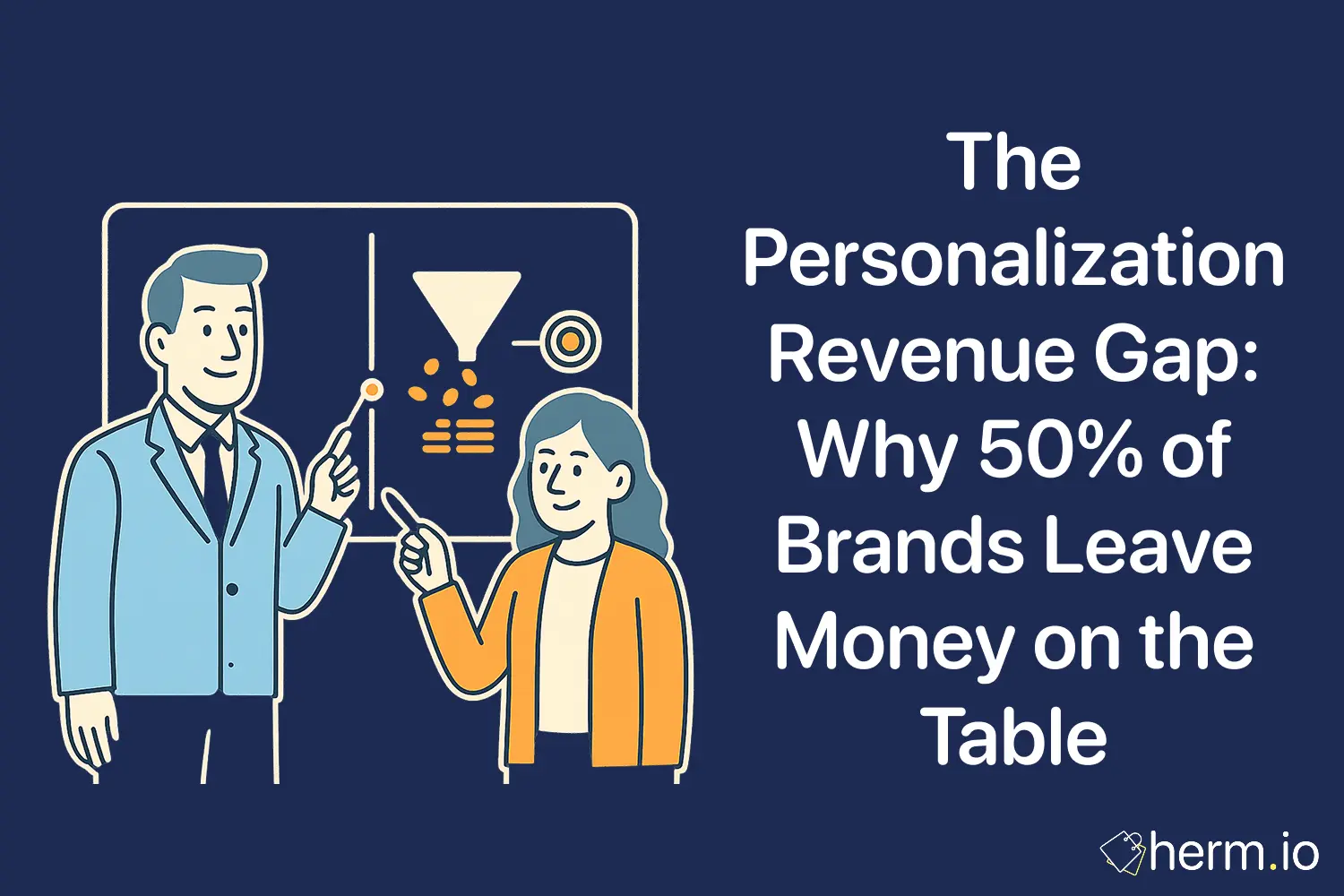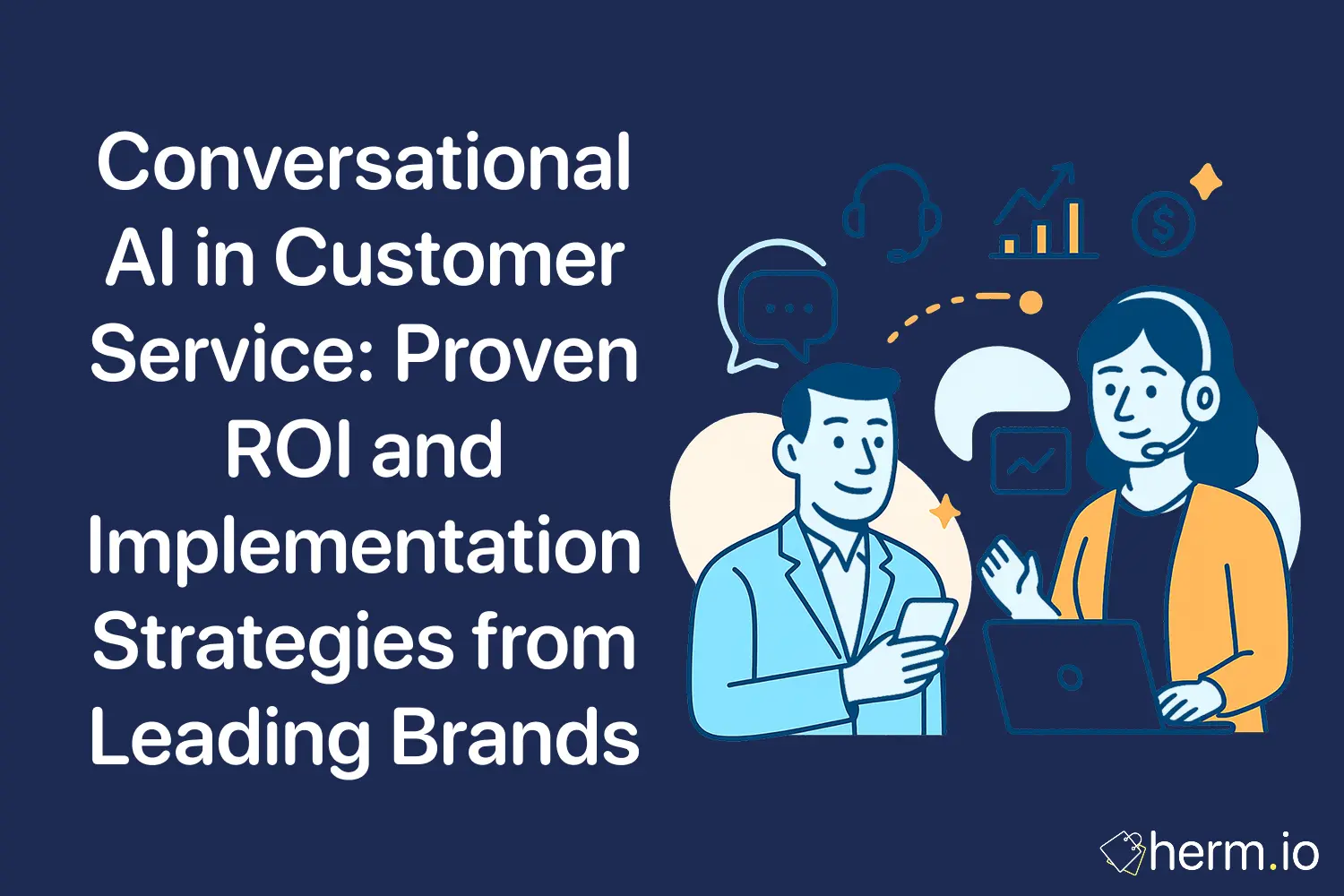
Picture this scenario: your company has just been acquired, and you have exactly 90 days to choose between maintaining a complex, multi-platform marketing stack or migrating to an entirely new solution. The numbers tell a clear story about what most organisations face during such transitions.
According to comprehensive industry research, 79% of marketers now automate their customer journey, yet 91% of organisations report increasing demand for automation capabilities. This creates a fascinating paradox: while automation adoption grows, the complexity of implementation decisions intensifies proportionally.
The marketing automation market, valued at $7.3 billion in 2023, is expected to reach $13.97 billion by 2030, representing a compound annual growth rate of 12.74%. These figures reveal more than market expansion; they indicate a fundamental shift in how businesses approach customer engagement architecture.
This analysis examines real-world platform migrations, implementation frameworks, and measurable outcomes from organisations that have navigated major marketing automation transitions. Rather than theoretical comparisons, we'll explore concrete evidence from companies that faced genuine business constraints and delivered quantifiable results.
The Mathematics of Marketing Automation Complexity
Like a well-engineered system, modern marketing automation presents both opportunities and structural challenges. Research indicates that 91% of organisations experience increased demand for automation from multiple departments: research and development (39%), administrative and operations (38%), customer service (33%), and marketing (26%).
The complexity becomes clear when examining performance metrics. The top 10% of email workflows generate $16.96 in revenue per recipient, whilst average email flows generate only $1.94. This 774% performance differential suggests that implementation quality, rather than platform selection alone, determines outcome success.
Consider the workflow performance hierarchy documented in recent studies:
- Abandoned cart workflows: $28.89 for top performers vs $3.65 average
- Welcome flows: $21.18 vs $2.65
- Abandoned browsing automations: $7.21 vs $1.07
- Post-purchase sequences: $5.14 vs $0.41
These metrics demonstrate that platform capability means little without proper implementation architecture.
Real-World Migration Success: The Marq Implementation
Looking at the data objectively, Marq's 90-day migration provides the most comprehensive case study of platform transition under genuine business pressure. When acquired by a private equity firm, Marq faced a binary choice: clone their parent company's existing technology stack or implement an independent solution.
The parent company's infrastructure consisted of Salesforce, Marketo, Zendesk, Workato, Tableau, Outreach, Groove, and Chorus, requiring eight full-time employees to administer. David Askvig, Director of Marketing Automation at Marq, identified a critical integration failure: "Due to the complexity of our systems, Marketo was never fully integrated with Salesforce. Workato passed information in only one direction from marketing to sales. Zendesk and Salesforce communicated through a Zapier connection. Sales, marketing, and service were on different islands."
The numbers revealed the true cost of complexity. According to Director of Sales Strategy and Operations Chandler Shipley, the parent company required "four Salesforce admins and four engineers to keep their existing system running."
Implementation Architecture and Constraints
Marq's migration faced additional technical constraints due to contractual obligations preventing integration with parent company systems. This forced manual data migration through upload tools, adding complexity layers to an already compressed timeline.
Despite these challenges, Marq successfully implemented the complete HubSpot CRM platform, including:
- Sales Hub Enterprise (25 users)
- Marketing Hub Enterprise
- Service Hub Enterprise (5 users)
- Operations Hub Professional
- CMS Hub Professional
The implementation required no transition period with parallel systems running, yet achieved zero sales downtime during cutover.
Measurable Outcomes and Efficiency Gains
The post-migration metrics demonstrate the engineering principle that elegant solutions often outperform complex ones:
Administrative Efficiency: Marq eliminated the eight-person administrative team requirement. Department heads now perform most platform changes independently due to intuitive platform design.
Development Speed: Tasks requiring weeks in the previous software now complete within one day or less. As David Askvig noted: "Our speed to adapt and change processes is way faster."
Cost Reduction: Total technology costs decreased by 50% compared to the fragmented stack. Annual licence fees alone dropped by $77,000, excluding administrative overhead reductions.
Database Scalability: The previous system forced routine record deletion to manage database costs. HubSpot's contact designation system eliminated this constraint, particularly valuable for SaaS companies with freemium products.
Visibility Integration: Sales representatives gained comprehensive contact context, including page visits and email engagement, directly within the contact record.
Platform Architecture Comparison Framework
Like comparing different engineering approaches to the same structural problem, marketing automation platforms represent distinct philosophical approaches to customer data management.
Salesforce Marketing Cloud Account Positioning
Research from Gartner Magic Quadrant Marketing Automation 2023 positions Salesforce Marketing Cloud Account as the leading solution for Sales Cloud integration. The platform received ratings of 4.2/5 for evaluation and contracting, 4.2/5 for integration and deployment, 4.1/5 for service and support, and 4.3/5 for product capabilities.
However, analysis reveals implementation complexity concerns. As documented in user feedback, "the many different functions of Salesforce can be a hurdle" because understanding all features requires significant time investment. Platform performance correlates directly with internal data integrity quality, making analysis more difficult and requiring additional internal work.
HubSpot's All-in-One Architecture
HubSpot secured the top position in Gartner's evaluation with 49% five-star ratings across 2036 reviews. The platform achieved 4.4/5 ratings across all categories: evaluation and contracting, integration and deployment, service and support, and product capabilities.
HubSpot's 2023 revenue reached $2.17 billion, representing 25% year-over-year growth, with 205,000 customers across 135+ countries. The platform's Average Subscription Revenue Per Customer was $11,365 in Q4 2023, whilst 53% of customers are located outside the United States, generating approximately 47% of total revenue.
Research indicates HubSpot customers report 114% more web traffic and 129% more leads after using Marketing Hub for one year. The platform offers over 1,500 integrations, with Operations Hub providing 110+ tools for two-way, real-time data synchronisation.
Marketo Engage's Enterprise Focus
Adobe's Marketo Engage, acquired for $4.7 billion in 2018, represents the enterprise-focused approach to marketing automation. The platform emphasises customisation and optimisation capabilities, particularly for B2B organisations requiring sophisticated lead scoring and nurturing frameworks.
According to Forrester research, Marketo Engage customers experienced an average 267% ROI, recouping costs in less than three months, with a collective net present value of $11 million in total benefits over three years.
The platform's modular architecture allows organisations to implement specific functionality areas: marketing automation, email marketing, lead management, account-based marketing, digital advertising, social marketing, and mobile marketing.
Implementation Timeframes and Resource Requirements
The data reveals significant variance in implementation complexity across platforms. Research indicates that 36% of marketers require six months to implement their marketing automation platform, with most time spent learning the tool rather than technical configuration.
Rapid Deployment Models
Marq's 90-day implementation represents an accelerated timeline enabled by specific architectural decisions:
Pre-Implementation Planning: The team evaluated platform requirements and consultant partnerships before the acquisition announcement, reducing decision-making time.
Expert Partnership: Collaboration with Aptitude 8, an Elite HubSpot Solutions Partner with expertise in both Salesforce and HubSpot, provided implementation velocity. As Chandler Shipley noted: "Their teams dug deep to figure out not just WHAT we wanted to do but WHY we wanted to do it."
Simplified Architecture: Moving from eight separate tools to one integrated platform eliminated complex integration requirements and reduced training overhead.
Resource Allocation Patterns
Analysis of implementation success factors reveals consistent patterns:
Skill Requirements: HubSpot implementations typically require less technical expertise due to intuitive interface design and comprehensive onboarding processes. Marketo implementations demand advanced marketing knowledge and IT collaboration for optimal configuration.
Training Investment: HubSpot's design philosophy enables department-level self-service capabilities. Marketo's sophisticated functionality requires formal training through Marketo University for effective utilisation.
Ongoing Administration: The research demonstrates stark administrative requirement differences. Complex multi-platform stacks require dedicated technical teams, whilst integrated platforms enable distributed management models.
Advanced Integration and Customisation Capabilities
Like building modular components within a larger system architecture, modern marketing automation platforms provide extensibility through custom integrations and workflow development.
Operations Hub Extensibility
Marq's implementation showcases advanced customisation through HubSpot's Operations Hub. Aptitude 8 developed custom-coded actions extending native quote approval functionality, enabling multiple approver management and custom logic implementation.
The team also created branded quote templates with automatic population from deal records, ensuring compliance and reducing error rates. According to Chandler Shipley: "Now, our quotes are very structurally sound. They also look good and increase our chances of landing the deal."
Custom Behavioral Events Integration
The implementation roadmap includes custom behavioral events (CBEs) for product database integration. These events track specific product lifecycle milestones determined by the product team as customer activation indicators: free trial creation, documentation feature views, and user additions.
Connor Jeffers, Founder and CEO of Aptitude 8, explains: "We created custom behavioral events for free trial creation and other key product lifecycle events that the Marq product team determined were key steps to customer activation. They'll not only be able to measure these in HubSpot but also use workflows with CBE triggering to drive specific actions and measure results."
Real-Time Data Synchronisation
Advanced implementations require real-time data flows between product databases and marketing systems. Marq's architecture utilises custom objects populated directly from their Snowflake product database through Hightouch integration.
This architecture provides:
- Real-time customer lifetime value visibility for sales teams
- Marketing upselling and re-engagement capabilities for existing customers
- Direct customer service access to product data within the CRM
As Connor Jeffers noted: "Before, [Marq] would have to export CRM and product data, aggregate it, and analyse it. Now, customer value is all reported out of HubSpot."
Cost-Benefit Analysis and ROI Measurement
The numbers don't lie about platform economics. Marq's financial analysis provides concrete metrics for migration ROI calculation.
Direct Cost Reductions
Licence Fee Savings: $77,000 annual reduction in software licensing costs represents immediate measurable benefit.
Administrative Overhead: Eliminating eight FTE administrative positions generates substantial ongoing savings. At conservative estimates of £50,000 per administrative FTE (including benefits), this represents £400,000 annual savings.
Development Efficiency: Tasks requiring weeks now complete within one day, representing productivity gains of approximately 2000% for routine modifications.
Indirect Value Creation
Database Economics: Removing artificial database size constraints enables retention of all customer data without deletion requirements. For SaaS companies with freemium models, this removes growth limitations and improves customer lifecycle analysis capabilities.
Sales Velocity: Zero-downtime implementation preserved revenue generation during transition. Integration visibility improvements enable more informed sales conversations and potentially higher conversion rates.
Scalability Architecture: The unified platform eliminates integration bottlenecks that previously limited growth capacity and campaign complexity.
Investment Recovery Timeframe
Using Marq's documented metrics, the investment recovery calculation appears straightforward:
- Annual savings: $77,000 (licence fees only)
- Implementation investment: Undisclosed, but typical enterprise HubSpot implementations range £25,000-£75,000
- Administrative savings: £400,000 annually
- Recovery timeframe: Likely under three months, consistent with Marketo Engage research showing average recovery periods of less than 90 days
Future-Proofing Marketing Technology Architecture
Like designing infrastructure for future expansion, marketing automation platform selection requires consideration of technological evolution patterns.
Artificial Intelligence Integration Trends
Research indicates that 75% of marketers are implementing or experimenting with AI, with high performers 2.5 times more likely to have fully implemented AI within digital marketing efforts. This creates platform evaluation criteria around AI readiness and integration capabilities.
HubSpot's "Breeze" AI engine, introduced in 2024, provides advanced automation and predictive analytics capabilities integrated throughout the platform. The system offers predictive insights, optimisation suggestions, and content generation capabilities.
Marketo's AI capabilities include Adobe's generative AI for email subject lines and personalised content generation, plus Adobe Firefly integration for image creation. The platform provides predictive content, predictive audiences, and account profiling functionality.
Privacy and Data Protection Architecture
Research reveals that 98% of marketers consider trustworthy data essential for effective AI applications, whilst 41% of CMOs worry about data exposure or leakage from generative AI systems.
Platform architecture increasingly requires privacy-first design principles, exemplified by solutions like the Einstein Trust Layer, which provides secure data retrieval, real-time context checks, and zero data retention policies.
Integration Ecosystem Evolution
The research demonstrates that 52% of marketers prioritise integrations when selecting marketing automation software. Modern platforms must support:
- Native CRM integrations for seamless data flow
- API accessibility for custom integrations
- Third-party marketplace ecosystems
- Real-time data synchronisation capabilities
Strategic Implementation Framework
Based on research analysis, successful marketing automation implementations follow consistent architectural principles:
Assessment and Planning Phase
Current State Analysis: Document existing tool inventory, administrative requirements, integration complexity, and cost structure. Marq's eight-tool stack requiring eight administrators illustrates the complexity measurement baseline.
Requirements Definition: Identify specific business capabilities needed rather than feature lists. Focus on integration requirements, scalability needs, and compliance obligations.
Constraint Identification: Document timeline pressures, resource limitations, and technical constraints that affect implementation approach.
Vendor Evaluation Framework
Capability Mapping: Match platform capabilities to documented requirements rather than comprehensive feature comparisons.
Implementation Complexity Assessment: Evaluate setup requirements, training needs, and ongoing administrative overhead.
Integration Architecture Review: Assess native integrations, API capabilities, and data synchronisation options for existing systems.
Total Cost of Ownership Calculation: Include licensing, implementation, training, and ongoing administrative costs in financial analysis.
Implementation Execution Strategy
Expert Partnership Selection: Evaluate implementation partners with experience in both current and target platforms to ensure context understanding.
Phased Migration Planning: Design implementation phases that minimise business disruption whilst building capability incrementally.
Data Migration Architecture: Plan data extraction, transformation, and loading processes with validation checkpoints.
Training and Change Management: Design user adoption programmes appropriate to platform complexity and organisational technical capabilities.
Looking at the data objectively, the marketing automation platform landscape continues consolidating around platforms that balance capability sophistication with implementation simplicity. The most successful migrations combine careful planning with expert implementation partnerships and realistic timeline expectations.
The Marq case study demonstrates that even under extreme time pressure and technical constraints, well-executed migrations can deliver immediate cost reductions and long-term capability improvements. However, success requires honest assessment of organisational capabilities, clear requirement definition, and appropriate expert guidance.
As the marketing automation market continues growing toward its projected $13.97 billion value by 2030, organisations must balance feature sophistication with implementation pragmatism. The platforms that succeed will be those that deliver advanced capabilities through simplified user experiences, much like any well-engineered system that conceals complexity while providing powerful functionality.
The numbers indicate that marketing automation platform selection represents far more than software procurement; it constitutes infrastructure architecture decisions that affect organisational capability for years to come.
Frequently Asked Questions
How long should organisations expect marketing automation platform implementations to take?
Research indicates that 36% of marketers require six months for implementation, with most time spent learning the platform rather than technical configuration. However, accelerated timelines are possible with proper planning and expert guidance. Marq completed their full HubSpot implementation in 90 days under acquisition constraints, demonstrating that timeline compression is achievable with appropriate resources and simplified architecture approaches.
What are the typical cost savings from consolidating multiple marketing tools into one platform?
Marq's documented experience shows 50% total technology cost reduction when moving from their eight-tool stack to HubSpot. Annual licence fees alone decreased by $77,000, whilst administrative overhead dropped from eight FTEs to department-level self-service. The financial benefits extend beyond direct costs to include development efficiency improvements, with tasks requiring weeks now completing within one day.
How do organisations evaluate whether their current marketing automation platform meets future needs?
Assessment should focus on integration capabilities, administrative overhead, and scalability constraints rather than feature lists. Key indicators include: artificial intelligence readiness (75% of marketers are experimenting with AI), administrative resource requirements, database size limitations, and development velocity for routine modifications. If routine changes require significant time investment or technical support, platform evaluation becomes justified.
What technical integration challenges should organisations anticipate during platform migrations?
The most common challenge involves data architecture differences between platforms. Marq faced additional complexity due to contractual obligations preventing system integration during migration, requiring manual data upload processes. Successful migrations require careful data mapping, validation checkpoints, and contingency planning for integration failures. Expert partnership selection becomes critical for organisations lacking internal technical expertise.
How can organisations measure marketing automation platform ROI beyond cost savings?
Comprehensive ROI measurement includes efficiency gains, capability improvements, and growth enablement factors. Research shows the top 10% of email workflows generate $16.96 in revenue per recipient versus $1.94 for average implementations, indicating that platform optimisation delivers measurable revenue impact. Additional metrics include sales velocity improvements, database scalability benefits, and development efficiency gains for marketing campaigns and process modifications.
What factors determine whether organisations should choose all-in-one platforms versus best-of-breed tool combinations?
The research suggests that administrative complexity often outweighs feature sophistication advantages. Marq's experience with eight separate tools requiring eight administrators illustrates the hidden costs of complex architectures. Organisations with dedicated technical teams and sophisticated integration requirements may benefit from best-of-breed approaches, whilst those prioritising efficiency and reduced administrative overhead typically achieve better outcomes with integrated platforms.
How do privacy regulations and data protection requirements affect marketing automation platform selection?
Current research indicates that 98% of marketers consider trustworthy data essential for AI applications, whilst 41% of CMOs worry about data exposure from generative AI. Platform architecture increasingly requires privacy-first design, secure data handling, and compliance capabilities for international regulations. Modern platforms must provide transparent data usage policies, secure integration architectures, and granular data access controls to meet evolving privacy requirements.
References
- https://www.hubspot.com/case-studies/marq
- https://www.emailvendorselection.com/marketing-automation-statistics/
- https://zapier.com/blog/hubspot-vs-marketo/
- https://business.adobe.com/uk/products/marketo/compare.html
- https://www.salesforce.com/au/marketing/marketing-trends/
- https://trio.dev/hubspot-vs-marketo/
- https://www.thorit.com/en/magazin/gartner-magic-quadrant-marketing-automation-2023

Camille Durand
I'm a marketing analytics expert and data scientist with a background in civil engineering. I specialize in helping businesses make data-driven decisions through statistical insights and mathematical modeling. I'm known for my minimalist approach and passion for clean, actionable analytics.

.png)








.png)

.png)
.png)
.png)